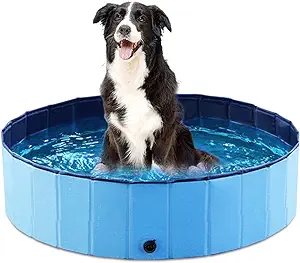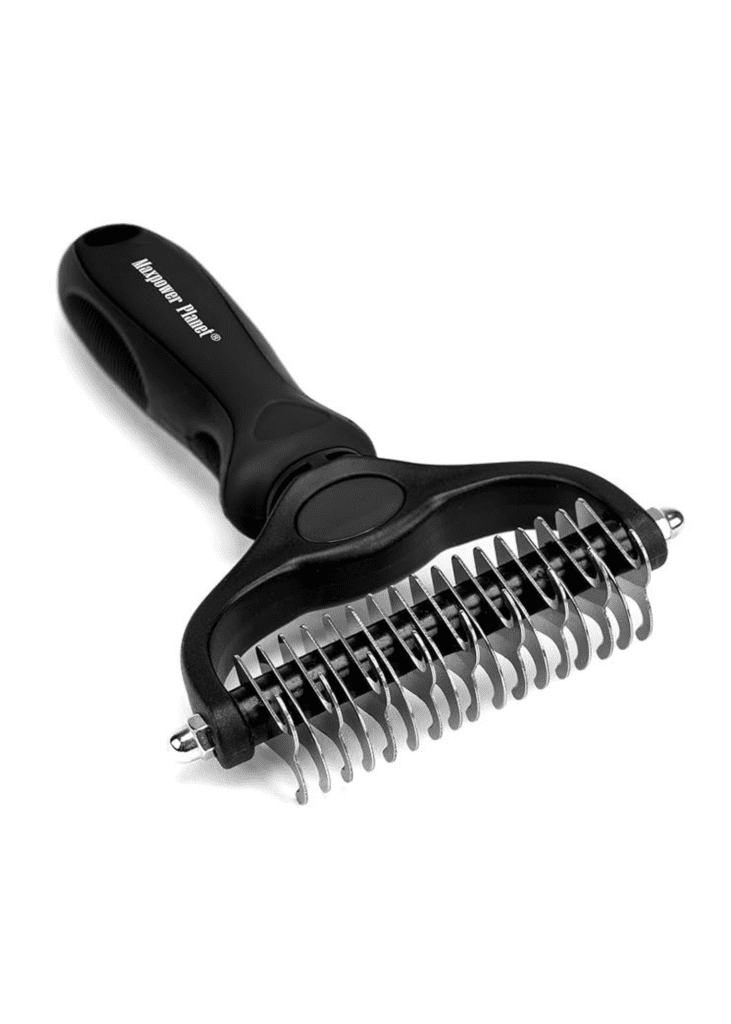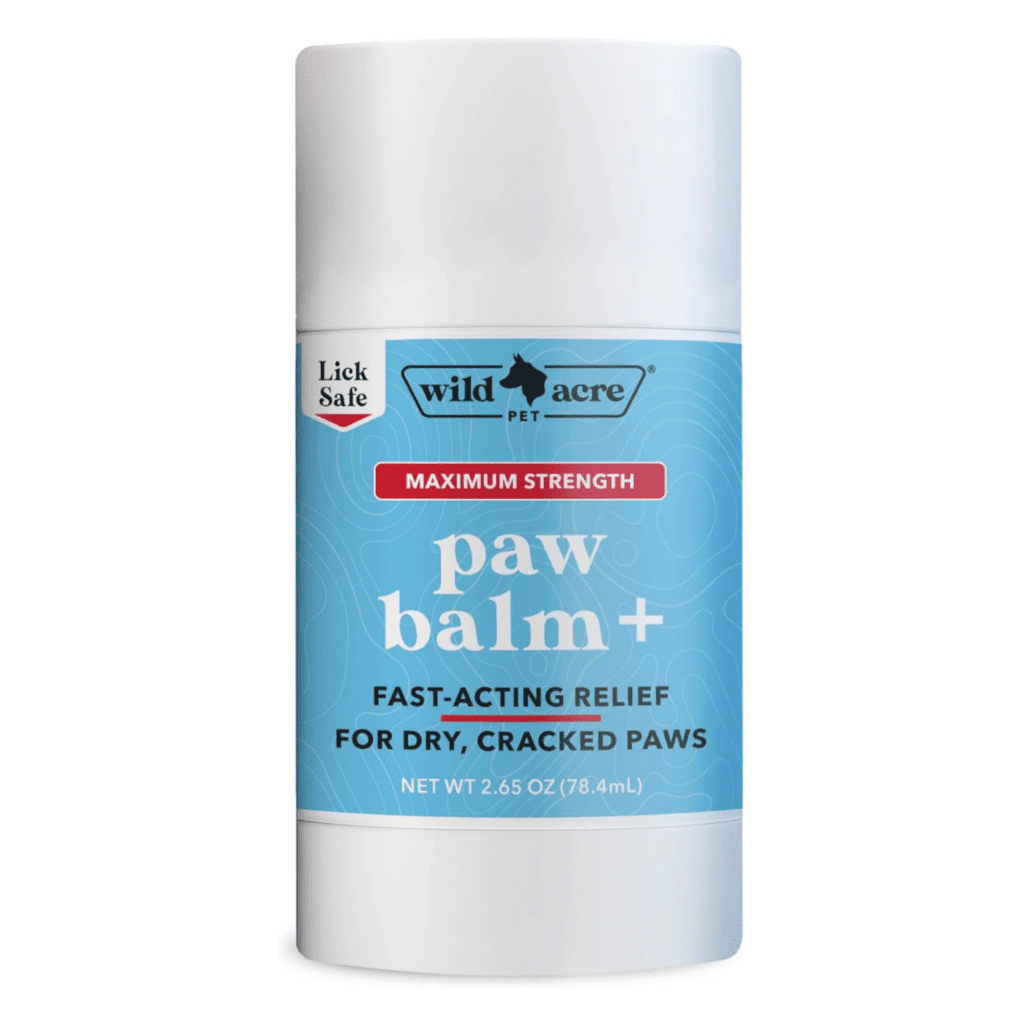Is Your Dog Ready for Hot Weather? Get Prepared Now
This post may contain affiliate links, which means I’ll receive a commission if you purchase through my link, at NO EXTRA COST TO YOU
As the warm and sunny days of summer approach, it’s essential to start preparing not just for your own comfort, but for your dog’s well-being too. Summer is a fantastic time for outdoor adventures and fun activities with your furry friend, but the season also brings unique challenges that require careful attention. High temperatures, intense sunlight, and increased outdoor activities can pose serious risks to your dog’s health and safety if proper precautions aren’t taken.
In this comprehensive guide, we’ll provide you with all the essential tips and advice you need to ensure your dog is fully prepared for summer. We’ll cover critical topics such as keeping your dog hydrated, preventing heatstroke, protecting those sensitive paws from hot surfaces, and adjusting grooming routines to suit the warmer weather. Additionally, we’ll suggest summer-friendly activities to keep your dog active and entertained, and introduce you to cooling products that can make a big difference in your dog’s comfort.
By taking these proactive steps, you can help your canine companion enjoy a safe, healthy, and happy summer. Whether you’re planning beach trips, hikes, or simply spending more time in the backyard, our expert tips will ensure that your dog is ready to join in on the summer fun without any worries. Read on to discover how to make this summer the best one yet for your beloved pet!

1- Hydration Tips: The Importance of Keeping Your Dog Hydrated
Ensuring your dog stays hydrated during the hot summer months is crucial for their health and well-being. Proper hydration is essential for regulating body temperature, maintaining energy levels, and supporting overall bodily functions. As temperatures rise, dogs are at a higher risk of dehydration, which can lead to serious health issues if not addressed promptly.
Signs of Dehydration in Dogs
Recognizing the signs of dehydration early can prevent more severe health problems. Common symptoms include:
- Excessive panting: Dogs pant to cool themselves, but excessive panting can indicate overheating and dehydration.
- Dry nose and gums: A healthy dog should have a moist nose and gums. Dryness can be a sign of dehydration.
- Lethargy: If your dog seems unusually tired or sluggish, it might be due to a lack of fluids.
- Sunken eyes: Dehydration can cause your dog’s eyes to appear sunken.
- Loss of skin elasticity: Gently pinch your dog’s skin; if it doesn’t quickly return to its normal position, your dog may be dehydrated.
Tips to Keep Your Dog Hydrated
- Provide Fresh Water Constantly
- Ensure your dog has access to fresh, clean water at all times. Change the water frequently to keep it cool and appealing.
- Use Multiple Water Bowls
- Place water bowls in various locations around your home and yard to encourage your dog to drink more often.
- Add Flavor to the Water
- To entice your dog to drink more, add a splash of low-sodium chicken broth or a few ice cubes to their water bowl.
- Carry a Portable Water Bowl
- When you’re out on walks or adventures, bring a portable water bowl and a bottle of water to keep your dog hydrated on the go.
- Offer Hydrating Foods
- Include moisture-rich foods in your dog’s diet, such as cucumbers, watermelon (seedless), and carrots. These can help supplement their water intake.
- Monitor Water Intake
- Keep an eye on how much water your dog is drinking. If you notice a significant decrease in their water intake, consult your veterinarian.
Examples of Portable Water Bowls;
Preventing Dehydration
Preventing dehydration is easier than treating it. Here are some proactive steps to ensure your dog stays hydrated:
- Avoid Midday Walks: The midday sun can be intense. Opt for early morning or late evening walks when it’s cooler.
- Provide Shade: Ensure your dog has access to shaded areas when outside.
- Use Cooling Products: Cooling mats and vests can help keep your dog comfortable and reduce the risk of overheating.
By following these tips, you can ensure your dog stays hydrated and healthy throughout the summer. Proper hydration is a key component of keeping your dog safe and happy during the warmer months, allowing you both to enjoy all the fun that summer has to offer.
2– Heatstroke Prevention: Keeping Your Dog Safe in the Summer Heat
Heatstroke is a serious and potentially life-threatening condition that can affect dogs, especially during the hot summer months. As temperatures soar, it’s essential to take proactive measures to prevent heatstroke and keep your furry friend safe and comfortable. Here’s how you can protect your dog from heatstroke:
Tips for Preventing Heatstroke
- Limit Outdoor Activities: Avoid strenuous exercise and outdoor activities during the hottest parts of the day, typically between 10 a.m. and 4 p.m.
- Provide Shade and Water: Create shaded areas in your yard where your dog can escape the sun’s heat. Always ensure your dog has access to fresh, cool water.
- Never Leave Your Dog in a Parked Car: Even on relatively mild days, the temperature inside a parked car can skyrocket within minutes, posing a severe risk of heatstroke.
- Use Cooling Products: Invest in cooling mats, vests, or bandanas to help regulate your dog’s body temperature during outdoor activities.
- Monitor Your Dog’s Breathing: Keep an eye on your dog’s breathing rate and effort during walks or playtime. If they’re panting excessively, it’s time to take a break and find a cool, shaded area.
- Be Mindful of Humidity: High humidity can make it harder for dogs to cool down through panting. Exercise extra caution on humid days and limit outdoor exposure accordingly.
If you suspect your dog is suffering from heatstroke, it’s crucial to seek veterinary care immediately.
3- Paw Protection
During the summer months, hot pavement, sand, and other surfaces can pose a risk to your dog’s delicate paw pads. Protecting your dog’s paws is essential for preventing burns, injuries, and discomfort. Here are some tips to ensure your furry friend’s paws stay safe and healthy:
Tips for Paw Protection
- Walk During Cooler Times: Schedule walks during the cooler parts of the day, such as early morning or late evening, to minimize exposure to hot surfaces.
- Test Surface Temperature: Before walking your dog, place the back of your hand on the pavement or sand for a few seconds. If it’s too hot for your hand, it’s too hot for your dog’s paws.
- Use Paw Protection Products: Consider using booties or paw wax to protect your dog’s paws from hot surfaces. Booties provide a physical barrier, while paw wax forms a protective layer over the paw pads.
- Stay on Grass or Shaded Paths: Whenever possible, choose grassy or shaded areas for walks to reduce the risk of paw pad burns.
- Moisturize Paw Pads: Keep your dog’s paw pads moisturized to prevent cracking and drying, especially in hot, dry weather.
- Rinse and Dry Paws: After walks on hot surfaces or in sandy areas, rinse your dog’s paws with cool water to remove any debris or irritants. Thoroughly dry their paws to prevent bacterial growth and infections.
4- Grooming for Summer
Regular grooming helps remove excess fur, dirt, and debris, which can trap heat and make your dog uncomfortable. It also allows you to check for parasites such as ticks and fleas, which are more prevalent in the summer. Proper grooming can help your dog stay cool and reduce the risk of skin irritations and infections.
Brushing Your Dog
- Increase Brushing Frequency: Brush your dog more frequently during the summer to remove loose fur and prevent matting. This helps improve air circulation through their coat, keeping them cooler.
- Use the Right Brush: Choose a brush suitable for your dog’s coat type. For example, a slicker brush is ideal for long-haired breeds, while a bristle brush works well for short-haired dogs.
- De-shedding Tools: Consider using de-shedding tools to remove the undercoat and reduce shedding, which can be particularly heavy in some breeds during the summer.




Maxpower Planet Pet Grooming Brush – Double Sided Shedding, Dematting Undercoat Rake for Dogs, Cats
Bathing Your Dog
- Regular Baths: Give your dog regular baths to keep their coat clean and free from allergens and parasites. Use a dog-specific shampoo that is gentle on their skin.
- Cool Water Baths: Bathe your dog in cool water to help lower their body temperature. Avoid using cold water, as it can cause discomfort and stress.
- Dry Thoroughly: After bathing, ensure your dog is thoroughly dried to prevent skin irritations and infections. Use a towel or a low-heat blow dryer designed for pets.




Trimming and Clipping
- Trim Fur Carefully: If your dog has a long or thick coat, consider trimming the fur to a manageable length. Avoid shaving your dog completely, as their coat provides protection against the sun and helps regulate body temperature.
- Focus on Key Areas: Trim the fur around your dog’s paws, belly, and rear to prevent matting and improve airflow. Be cautious and use pet-safe grooming scissors or clippers.
- Regular Nail Trimming: Keep your dog’s nails trimmed to prevent discomfort and injuries, especially if they spend more time outdoors in the summer.
By following these summer grooming tips, you can help your dog stay cool, comfortable, and healthy throughout the season. Regular grooming not only enhances your dog’s appearance but also contributes to their overall well-being, making summer a more enjoyable time for both of you.
5- Nutrition Adjustments
As temperatures rise during the summer months, it’s important to consider how the heat can affect your dog’s appetite and digestion. Adjusting feeding times and portions can help ensure your furry friend stays healthy and comfortable. Here are some essential tips for managing your dog’s diet during the summer.
1. Understanding Your Dog’s Summer Appetite
Dogs, like humans, can experience a decreased appetite during hot weather. The heat can make them less active, leading to a lower calorie requirement. Monitor your dog’s eating habits and adjust portions accordingly to avoid overfeeding and ensure they maintain a healthy weight.
2. Adjust Feeding Times
Morning and Evening Feedings: The cooler parts of the day, such as early morning and late evening, are ideal times to feed your dog. These times help avoid the hottest part of the day, which can make your dog uncomfortable and less inclined to eat. By adjusting feeding times, you can encourage a healthier appetite.
3. Smaller, More Frequent Meals
Instead of two large meals, consider offering smaller, more frequent meals throughout the day. This can help with digestion and prevent your dog from feeling sluggish in the heat. Breaking down meals into smaller portions can also make it easier for your dog to consume the necessary nutrients without feeling overwhelmed.
4. Hydration is Key
Ensure your dog has access to fresh, clean water at all times. Dehydration can be a significant concern during summer, and proper hydration aids digestion and overall health. Adding water to dry kibble can also make meals more appealing and help keep your dog hydrated.
5. Incorporate Moisture-Rich Foods
Consider adding moisture-rich foods to your dog’s diet. Fresh fruits and vegetables like cucumbers, watermelon (without seeds), and carrots are excellent options. These foods not only provide hydration but also add essential nutrients and variety to your dog’s meals.
6. Monitor Weight and Adjust Portions
Regularly monitor your dog’s weight and body condition. If your dog starts to gain weight, it may be necessary to reduce portion sizes. Conversely, if your dog loses weight or seems less energetic, you might need to increase their food intake slightly. Always consult with your veterinarian before making significant changes to your dog’s diet.
7. Avoid Overfeeding Treats
While treats are a great way to reward your dog, it’s essential to avoid overfeeding them, especially during summer. High-calorie treats can contribute to weight gain and reduce your dog’s appetite for regular meals. Opt for low-calorie treats and consider using fresh fruits or vegetables as a healthy alternative.
8. Consider a Light Formula Dog Food
During the summer, switching to a lighter formula dog food can help manage your dog’s weight and energy levels. Light formulas typically have fewer calories and are easier to digest, making them suitable for dogs with reduced summer activity levels.
9. Be Mindful of Exercise and Feeding Times
Avoid feeding your dog immediately before or after vigorous exercise. Dogs can be at risk of gastric torsion (bloat), particularly larger breeds. Allow at least an hour after exercise before feeding and ensure they have cooled down adequately.
10. Consult Your Veterinarian
Always consult your veterinarian before making any significant changes to your dog’s diet or feeding schedule. Your vet can provide personalized advice based on your dog’s age, breed, health status, and lifestyle to ensure they receive the best care during the summer months.
6- Travel Safety
Traveling with your furry friend can be a wonderful experience, especially in the summer when the weather is warm and inviting. However, summer travel with dogs requires extra precautions to ensure their safety and comfort. Here are some essential tips for traveling with dogs during the summer season.
1. Plan Ahead for Pet-Friendly Accommodations
Before you set off on your summer adventure, make sure to book pet-friendly accommodations. Many hotels, motels, and vacation rentals welcome pets, but policies can vary widely. Look for places that offer amenities for pets, such as designated pet areas, pet sitting services, and nearby walking trails. Websites like BringFido and Airbnb are great resources for finding pet-friendly lodging.
2. Keep Your Dog Hydrated
Summer heat can quickly lead to dehydration in dogs. Always carry a portable water bowl and plenty of fresh water. Offer water to your dog frequently, especially during walks or outdoor activities. Signs of dehydration in dogs include excessive panting, dry nose and gums, and lethargy.
3. Never Leave Your Dog in a Hot Car
This tip cannot be stressed enough: never leave your dog in a parked car, even for a few minutes. Cars can heat up rapidly, even with the windows cracked, leading to potentially fatal heatstroke. If you need to make a stop where dogs aren’t allowed, it’s best to leave your dog at home or find a pet-friendly alternative.
4. Use Sun Protection
Just like humans, dogs can get sunburned, especially those with short or light-colored coats. Apply pet-safe sunscreen to your dog’s nose, ears, and any other exposed skin. Additionally, consider getting protective clothing or a cooling vest to keep your dog comfortable.
5. Protect Your Dog’s Paws
Hot pavement can burn your dog’s paws. Try to walk your dog during the cooler parts of the day, such as early morning or late evening. You can also use paw wax or dog booties to protect their paws from hot surfaces. Always test the pavement with your hand; if it’s too hot for you, it’s too hot for your dog.
6. Plan for Regular Breaks
If you’re taking a long road trip, plan for regular breaks every 2-3 hours to let your dog stretch, hydrate, and relieve themselves. Look for rest stops with pet areas or parks where your dog can safely explore.
7. Keep Your Dog Cool
Ensure your dog stays cool during travel by using air conditioning or fans in the car. Portable cooling mats and cooling collars can also help keep your dog comfortable. If you’re hiking or spending time outdoors, find shaded areas to rest and avoid strenuous activity during peak heat hours.
8. Pack a Pet Travel Kit
Prepare a travel kit for your dog that includes:
- Food and water
- Bowls
- Leash and collar
- Waste bags
- Medications
- First aid kit
- Favorite toys and blanket
- Copies of vaccination records
Having these essentials on hand will make your trip smoother and ensure your dog’s needs are met.
9. Check for Local Pet Regulations
Different destinations have varying rules regarding pets. Research local regulations, such as leash laws and pet-friendly zones, to avoid any surprises. Also, check for any health advisories or required vaccinations, especially if you’re traveling across state lines or internationally.
10. Be Mindful of Your Dog’s Health
Keep an eye on your dog’s health throughout the trip. Watch for signs of heatstroke, such as excessive panting, drooling, vomiting, or collapse. If your dog shows any symptoms, move them to a cool area immediately and seek veterinary care. Always carry contact information for a local vet at your destination.
Ensuring your car is pet-friendly (e.g., using sunshades, never leaving your dog in the car).
By implementing these tips, you can ensure that your dog stays cool, comfortable, and safe throughout the summer months. Proper hydration, heatstroke prevention, paw protection, and grooming are all crucial elements of summer dog care. With a little extra attention and preparation, you can make this summer a joyful and healthy time for your canine companion.
Remember, a well-prepared dog is a happy dog. By taking these steps, you not only enhance your dog’s well-being but also strengthen the bond you share through enjoyable and safe summer activities. Here’s to a fantastic summer filled with fun, adventure, and cherished moments with your furry friend!




























